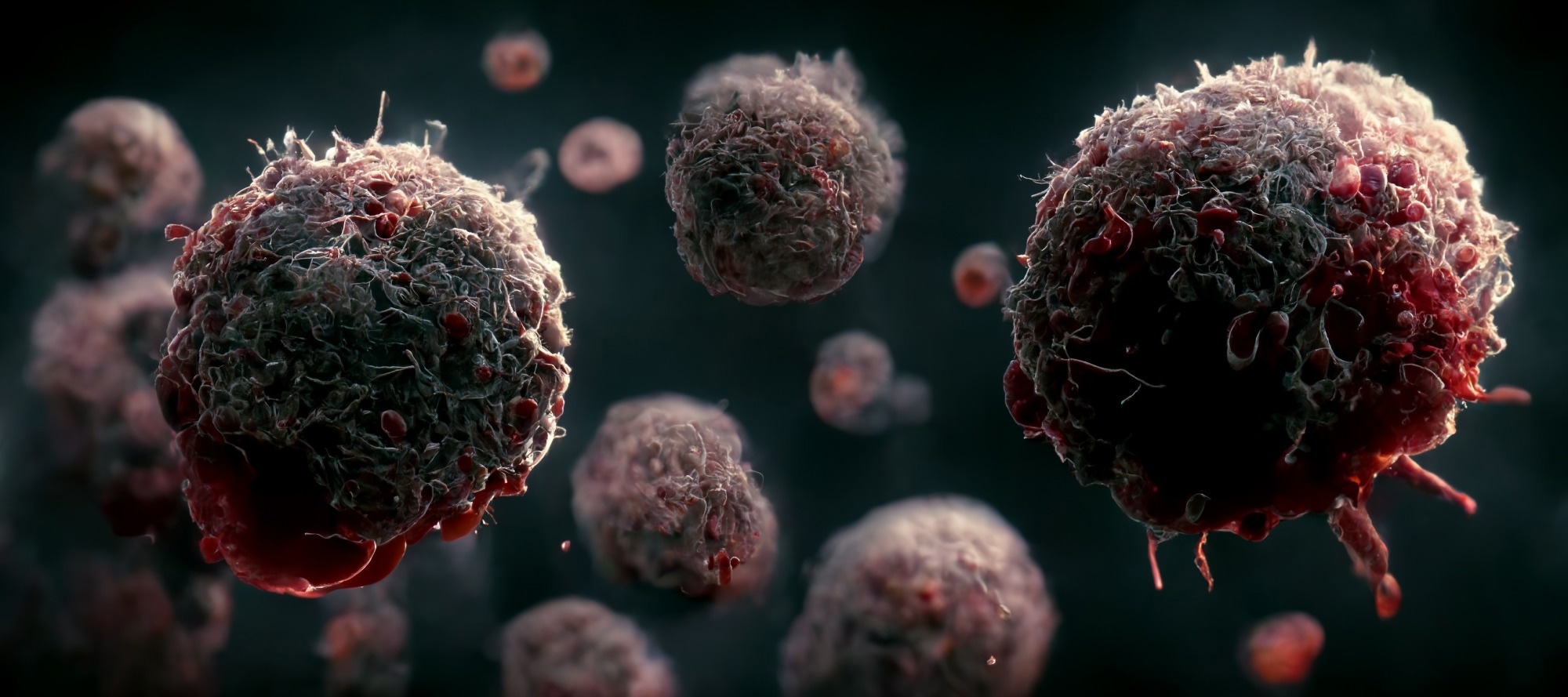In a recent study published in the eLife journal, researchers demonstrated that tumor cells evade immunotherapy by generating unique transient cell-in-cell structures, resistant to chemotherapy and destruction by T cells.
 Study: Transient cell-in-cell formation underlies tumor relapse and resistance to immunotherapy. Image Credit: CI Photos/Shutterstock
Study: Transient cell-in-cell formation underlies tumor relapse and resistance to immunotherapy. Image Credit: CI Photos/Shutterstock
Background
Despite some remarkable success stories, cancer immunotherapies that use the body's immune system to combat cancer stops working in many patients. It is unclear why this occurs, but how the immune system attacks cancer cells might have a role to play in this phenomenon.
Immunotherapies activate specialized killer T-cells, which trigger the immune response to tumors. These cells can identify cancer cells and inject toxic granules through their membranes to kill them. However, killer T-cells are not always effective because cancer cells are inherently good at avoiding detection. During treatment, their genes tend to mutate, giving them novel ways to evade the human immune system.
Intriguingly, upon analyzing tumor cell genes, scientists found that many of these genes encode proteins recognized by T-cells which do not change significantly, indicating that tumors' resistance to immunity might be physical rather than genetic.
About the study
In the present study, researchers extensively studied tumor relapse using a mouse model in which tumors recurred following their complete regression. They used a combination of dendritic cell adjuvant with tumor-binding antibodies to elicit highly potent T-cell immunity. A version of this therapy is under testing in a multi-center phase-I trial. Across multiple mouse models, treatment-induced T cell-dependant immunity completely eradicated established tumors. However, after ~10 days, nearly 50% of mice developed recurrent tumors resistant to subsequent treatments.
The researchers treated melanoma-bearing mice with splenic CD8+ T cells expressing T cell receptors (TCRs) against gp100 or TRP2 melanoma antigens. Note that glycoprotein 100 (gp100) antigen is expressed in nearly 61% of melanomas' followed by tyrosinase-related protein 2 (TRP2). Further, the team tested if these tumor-infiltrating T cells (TIL) were active. To this end, they transferred them into naïve mice and challenged them with tumor cells. In addition, they assessed changes in immunogenicity of resistant cell lines beyond gp100 and TRP2 expression.
The team established four cell lines of B16F10 that had relapsed tumors following immunotherapy to analyze their neoantigen site relative to B16F10 from untreated mice and performed a whole exome analysis (WES).To evaluate the human relevance of their findings, the researchers plotted the neoantigen burden identified in relapsed non-small cell carcinoma and melanoma patients after treatment with checkpoint blockade.
The researchers also enzymatically digested treated tumors and sorted the live melanoma cells using transmission electron microscopy (TEM). To ensure that the cell structures seen in TEM did not result from the isolation procedure, the researchers also analyzed histological sections of tumors, whose nuclei and cell membranes were fluorescently labeled. Finally, the researchers compared the viability and apoptosis rates of single tumor cells to that of cell-in-cell and what signaling cascade governed cell-in-cell structures.
Study findings
The researchers made several important observations in the current study. First, tumor cells survived immunotherapy by organizing themselves in a transient cell-in-cell formation. Secondly, parental B16F10 cell lines and their derivatives established following the T cell killing were similarly prone to T cell killing. Together, these results suggested that transient in vivo mechanisms govern the resistance of relapsed tumors. Ribonucleic acid sequencing (RNAseq) analysis also indicated that all the established cell lines clustered within similar principal components. On the contrary, the expression profile of TEM sorted tumor cells from immunotherapy-treated mice was markedly distinct.
Remarkably, proteins that are predominantly expressed on the membrane of interferon-gamma (IFNγ)-activated T cells secreted granules that mediated cell-in-cell formation. The T-cell-mediated cell-in-cell formation was, thus, governed by signal transducer and activator of transcription 3 (STAT3) and early growth response-1 (EGR1) signaling. Confocal analyses showed most tumor cells are organized in constellations of many nuclei surrounded by a single plasma membrane. TEM images also showed a unique separation of the plasma membranes and cytosols of the two cells. Immunotherapy-treated tumors showed an increased prevalence of such cell structures, particularly in sites where tumor cell apoptosis occurred. Inhibiting these factors before immunotherapy could markedly improve its therapeutic efficacy.
Conclusions
Overall, the current study highlighted a significant limitation of current immunotherapy. It revealed a previously unknown resistance mechanism that empowered tumor cells to endure immune-mediated killing without diminishing their immunogenicity.
The study described a novel mechanism of resistance to immune checkpoint blockade with significant implications for cancer immunotherapy, which could also extend to other malignancies. Gutwillig et al. demonstrated using several mouse tumor models that when the immune system attacks, tumor cells reorganize by hiding inside one another, which allows them to get under many layers of the cell membrane. At this point, killer T-cells could identify and inject the outer cell with toxic granules, but they cannot reach the cells inside. Gutwillig et al. identified some of the signals that killer T cells release and cancer cells recognize and showed that blocking them could cease cancer cells from hiding and make immunotherapy more effective. This novel approach could inform future research and help develop new cancer therapies or improve existing treatments.